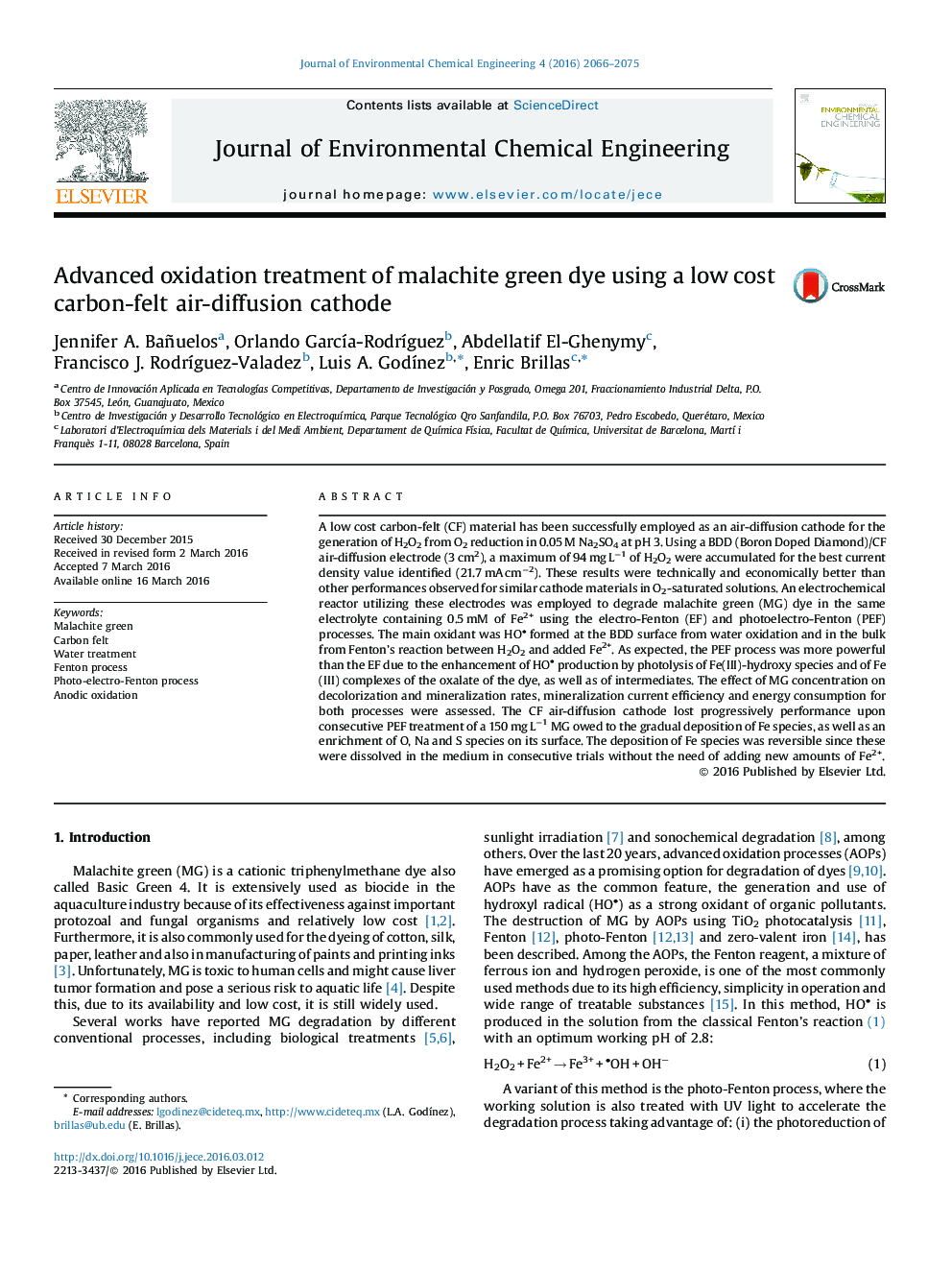| Article ID | Journal | Published Year | Pages | File Type |
|---|---|---|---|---|
| 221689 | Journal of Environmental Chemical Engineering | 2016 | 10 Pages |
•A low cost carbon-felt material was employed as an air-diffusion cathode for the generation of H2O2 from O2 reduction in acidic aqueous medium.•The carbon felt electrode performed technically and economically better than other carbonaceous materials in O2-saturated solutions.•An electro- and photo-electro-Fenton based reactor was constructed for the degradation of malachite green dye.•The carbon felt cathode progressively lost performance due to the gradual deposition of Fe species, however this deposition was reversible.
A low cost carbon-felt (CF) material has been successfully employed as an air-diffusion cathode for the generation of H2O2 from O2 reduction in 0.05 M Na2SO4 at pH 3. Using a BDD (Boron Doped Diamond)/CF air-diffusion electrode (3 cm2), a maximum of 94 mg L−1 of H2O2 were accumulated for the best current density value identified (21.7 mA cm−2). These results were technically and economically better than other performances observed for similar cathode materials in O2-saturated solutions. An electrochemical reactor utilizing these electrodes was employed to degrade malachite green (MG) dye in the same electrolyte containing 0.5 mM of Fe2+ using the electro-Fenton (EF) and photoelectro-Fenton (PEF) processes. The main oxidant was HO formed at the BDD surface from water oxidation and in the bulk from Fenton’s reaction between H2O2 and added Fe2+. As expected, the PEF process was more powerful than the EF due to the enhancement of HO production by photolysis of Fe(III)-hydroxy species and of Fe(III) complexes of the oxalate of the dye, as well as of intermediates. The effect of MG concentration on decolorization and mineralization rates, mineralization current efficiency and energy consumption for both processes were assessed. The CF air-diffusion cathode lost progressively performance upon consecutive PEF treatment of a 150 mg L−1 MG owed to the gradual deposition of Fe species, as well as an enrichment of O, Na and S species on its surface. The deposition of Fe species was reversible since these were dissolved in the medium in consecutive trials without the need of adding new amounts of Fe2+.
